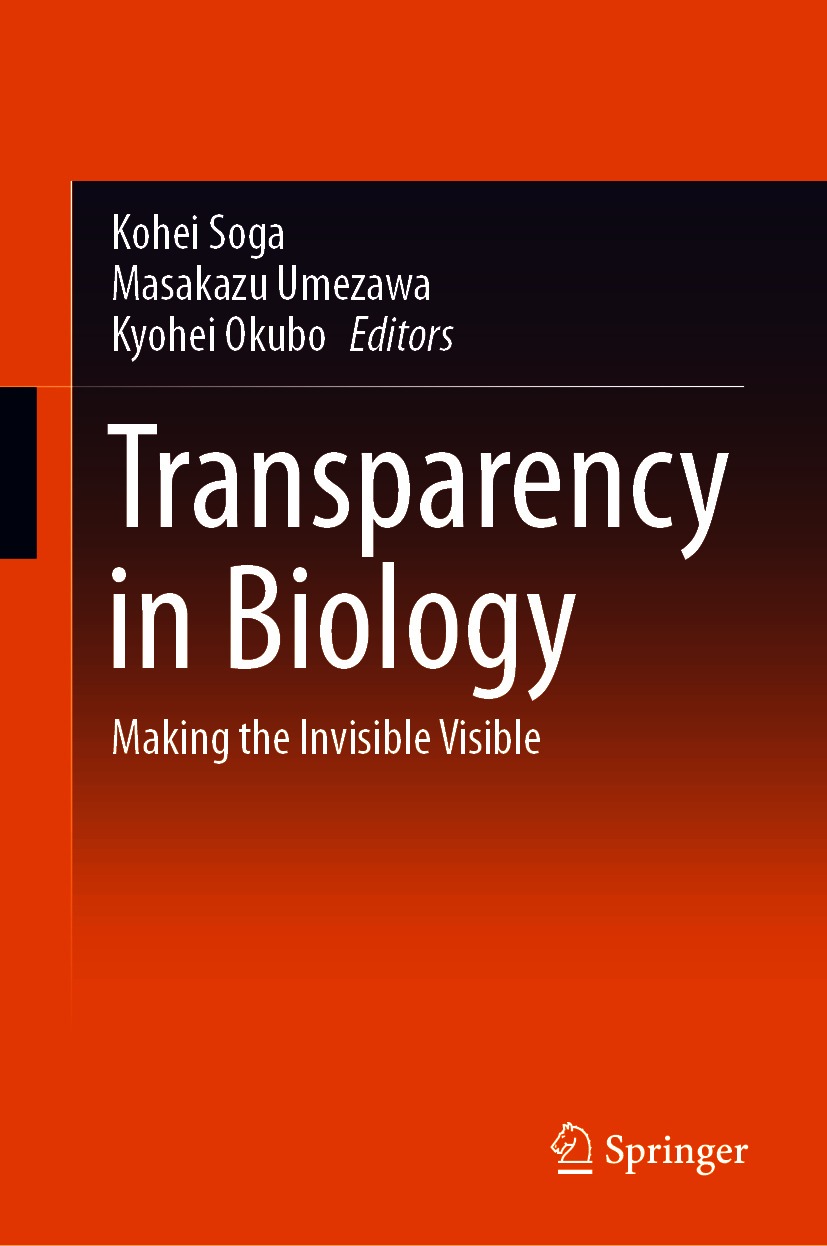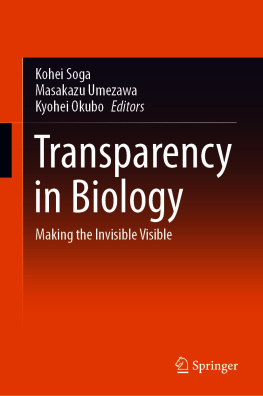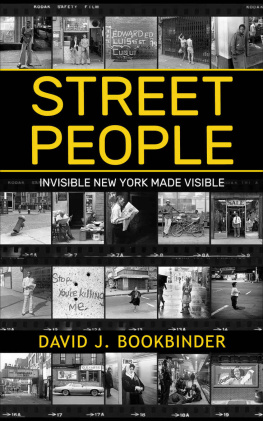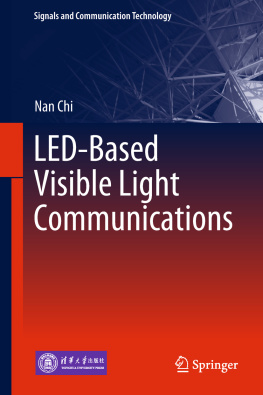Kohei Soga - Transparency in Biology: Making the Invisible Visible
Here you can read online Kohei Soga - Transparency in Biology: Making the Invisible Visible full text of the book (entire story) in english for free. Download pdf and epub, get meaning, cover and reviews about this ebook. year: 2021, publisher: Springer Singapore, genre: Home and family. Description of the work, (preface) as well as reviews are available. Best literature library LitArk.com created for fans of good reading and offers a wide selection of genres:
Romance novel
Science fiction
Adventure
Detective
Science
History
Home and family
Prose
Art
Politics
Computer
Non-fiction
Religion
Business
Children
Humor
Choose a favorite category and find really read worthwhile books. Enjoy immersion in the world of imagination, feel the emotions of the characters or learn something new for yourself, make an fascinating discovery.
- Book:Transparency in Biology: Making the Invisible Visible
- Author:
- Publisher:Springer Singapore
- Genre:
- Year:2021
- Rating:3 / 5
- Favourites:Add to favourites
- Your mark:
- 60
- 1
- 2
- 3
- 4
- 5
Transparency in Biology: Making the Invisible Visible: summary, description and annotation
We offer to read an annotation, description, summary or preface (depends on what the author of the book "Transparency in Biology: Making the Invisible Visible" wrote himself). If you haven't found the necessary information about the book — write in the comments, we will try to find it.
Kohei Soga: author's other books
Who wrote Transparency in Biology: Making the Invisible Visible? Find out the surname, the name of the author of the book and a list of all author's works by series.
Transparency in Biology: Making the Invisible Visible — read online for free the complete book (whole text) full work
Below is the text of the book, divided by pages. System saving the place of the last page read, allows you to conveniently read the book "Transparency in Biology: Making the Invisible Visible" online for free, without having to search again every time where you left off. Put a bookmark, and you can go to the page where you finished reading at any time.
Font size:
Interval:
Bookmark:


This Springer imprint is published by the registered company Springer Nature Singapore Pte Ltd.
The registered company address is: 152 Beach Road, #21-01/04 Gateway East, Singapore 189721, Singapore
Thirty years ago, when I was a graduate student, my classmate told me that you can see the skin through with several centimeters depth! I did not pay much attention on it. By 15 years ago, on my research works, I had nothing to do with biology or bioimaging. I had been mainly working on fluorescence materials for optical communication. One day, a biomaterials scientist complained me that he could not make fluorescence bioimaging probe luminescent. I was interested in it and started to collaborate with him and a biologist for upconversion fluorescent material for bioimaging. The upconversion material is to emit visible light with near-infrared (NIR) excitation. Eventually, Id noticed that we do not need visible light for bioimaging. Anyway, people do not observe cells or tissues with naked eyes. They are using cameras. Thanks to the optical communication research. Optical communication is using NIR light for communication because of the transparency of glass fibers with the NIR light. I was familiar with the materials and devices for the NIR optics. I started to utilize the NIR for bioimaging in 2005.
Ten years ago, a biologist visited me for discussing the NIR bioimaging. He is the inventor of a tissue clearing chemical. Five years ago, I joined his project on bioimaging. Three years ago, I was attending a conference, where he gave a talk with its title How do the cells feel on a dish? I was impressed with the title. What is the matter that I understand its feeling and mind? I am a materials scientist as well as a spectroscopist. Yes, I understand the minds of light and matters.
In these 15 years, by joining the community of researches on bioimaging, I have experienced the importance of the communication among the different specialty fields speaking different terms. Of course, we have to talk to medical doctors and biological scientists for understanding what they want, the users mind. For designing and producing fluorescence probes, as well delivering them, chemistry is important. The light mind can be understood by physics. For the management of devices, we need electronics and computer science. It is a recent trend to use mathematical algorithms involving machine learning to analyze the captured data. Truly, for understanding bioimaging, we need to involve people from various scientific fields.
During 15 years, I have concluded that one of a big issues for bioimaging is the transparency. Also, there are so many misunderstandings of the light mind. We need basic physics for understanding the light mind. As well, the basic one is pretty enough. Do not mix up the things. Do not misunderstand. I could not find a book which describes the transparency in biology properly.
This book consists of four parts and 11 chapters. The authors are from physics, chemistry and biology background. The first part is describing the essence of transparency. All of the physics for transparency for biology is involved in this part. It lightly introduces the tissue clearing chemical but concludes that for live imaging with transparency, we need to use the NIR light. The second part reviews the NIR fluorescence imaging and its probes. The third part deals with special bioimaging by the NIR fluorescence imaging involving thermometry and computed tomography. The last part introduces the applications of the NIR photonics, especially for clinics involving photodynamic therapy (PDT), hyperspectral imaging (HSI) and multimodal imaging with currently medically used imaging modalities. The HSI is not a fluorescence imaging. It is a probe-free imaging method by using very weak absorption by molecules in the NIR range.
The light mind is unexpectedly simple. I hope this book will make people to understand the simple mind of light for transparency to use and develop more advanced bioimaging.
Font size:
Interval:
Bookmark:
Similar books «Transparency in Biology: Making the Invisible Visible»
Look at similar books to Transparency in Biology: Making the Invisible Visible. We have selected literature similar in name and meaning in the hope of providing readers with more options to find new, interesting, not yet read works.
Discussion, reviews of the book Transparency in Biology: Making the Invisible Visible and just readers' own opinions. Leave your comments, write what you think about the work, its meaning or the main characters. Specify what exactly you liked and what you didn't like, and why you think so.













